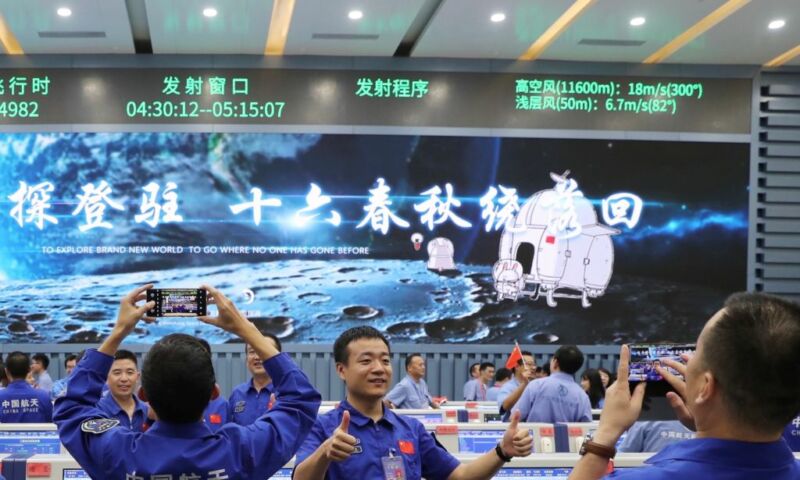
Update, Tuesday 10:25am ET: Chinese state news sources have reported that the Chang'e 5 probe landed safely on the Moon. In the end, live video of the attempt was not provided. If all goes well, the probe will now gather rock samples before a small return vehicle blasts of from the surface of the Moon on Thursday.
Update, Tuesday 9:20am ET: It appears that Chinese state television will broadcast the landing attempt of its Chang'e 5 mission live. The landing attempt, which will seek to collect and return rocks from the surface of the Moon, is expected to begin at 9:58am ET (14:58 UTC) and be completed by 10:13am ET (15:13 UTC).
The best available live video will be embedded below. (Note: The existing video cut out about 20 minutes before the landing attempt. We are attempting to find live video).
Coverage of the Chang'e-5 landing attempt, confirmed earlier today by China Lunar Exploration Program, has ended. Currently don't know if the attempt has been called off, an issue with the spacecraft, or higher powers suddenly nervous over coverage.
— Andrew Jones (@AJ_FI) December 1, 2020
Original post: China's ambitious space program does not often publish detailed plans of its activities in advance—perhaps because it makes it easier for the government to explain away any failures. But thanks to social media leaks, we can now be reasonably confident that the country will attempt to land its Chang'e 5 mission on the Moon on Tuesday.
The spacecraft's lander has already separated from the main orbital module and is expected to position itself in low-lunar orbit on Monday. Sources suggest the following timeline for activities on Tuesday:
- Start of powered descent: 14:48 UTC (9:48 am ET)
- Lunar landing: 15:15 UTC (10:15 am ET)
- Drilling for sub-surface samples: 17:15 UTC (12:15 pm ET)
The Change'5 lander—the latest probe in China's Moon program, which is named after a goddess of the Moon and began back in 2007—is the country's most ambitious mission to the Moon yet. The probe launched on November 23 and reached lunar orbit a couple of days later.
Now, the probe must execute a soft landing on the Moon and collect lunar samples. As much as 2kg of material will be scooped and loaded into a sample return vehicle. It is expected that this small spacecraft will then depart the lunar surface on Thursday to reunite with the lunar orbiter. If all goes well, after returning to Earth orbit later this month, a re-entry capsule will then separate from the spacecraft stack, and the samples will touch down in the Inner Mongolia region.
Only the United States, with its Apollo program in the late 1960s and early 1970s, and the Soviet Union, through a series of robotic missions shortly thereafter, have returned lunar rocks to Earth. The US Moon program returned 382kg of lunar rocks at that time—and even today scientists are opening and studying pristine material collected during Apollo. If Chang'e 5 is successful, these will be the first Moon rocks returned to Earth in more than four decades.
China currently has an extensive lunar program. As journalist Andrew Jones noted on Twitter, the Asian nation presently has seven spacecraft operating on or near the Moon: the Chang'e-3 lander, Chang'e-4 lander and Yutu-2 rover, Queqiao relay satellite, Chang'e 5 T1 orbiter, Chang'e 5 orbiter, and Chang'e 5 lander/ascent vehicle.
The country has further plans for lunar exploration, with future Chang'e missions slated to explore the polar regions and assess the viability of water ice resources. The country is also likely to build a prototype for a lunar scientific research station and within a decade or so may send its first taikonauts to the Moon's surface.
China's interest in the Moon is one of the principal drivers behind NASA's Artemis program, which seeks to send US astronauts from Europe, Japan, and elsewhere back to the Moon in the mid-2020s.
reader comments
214